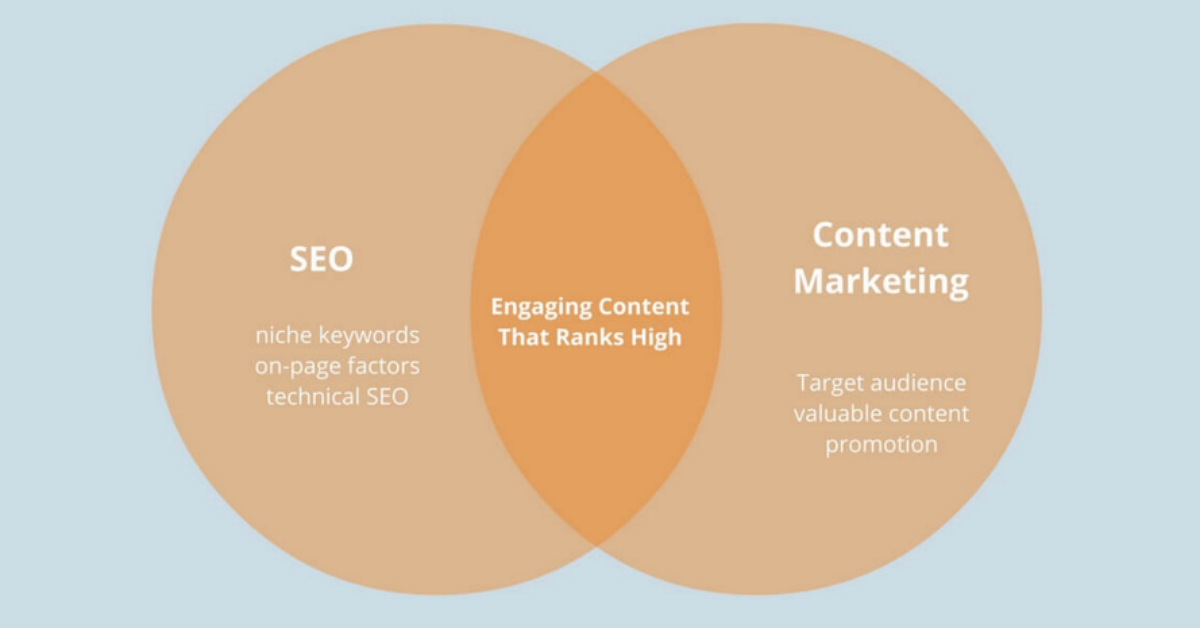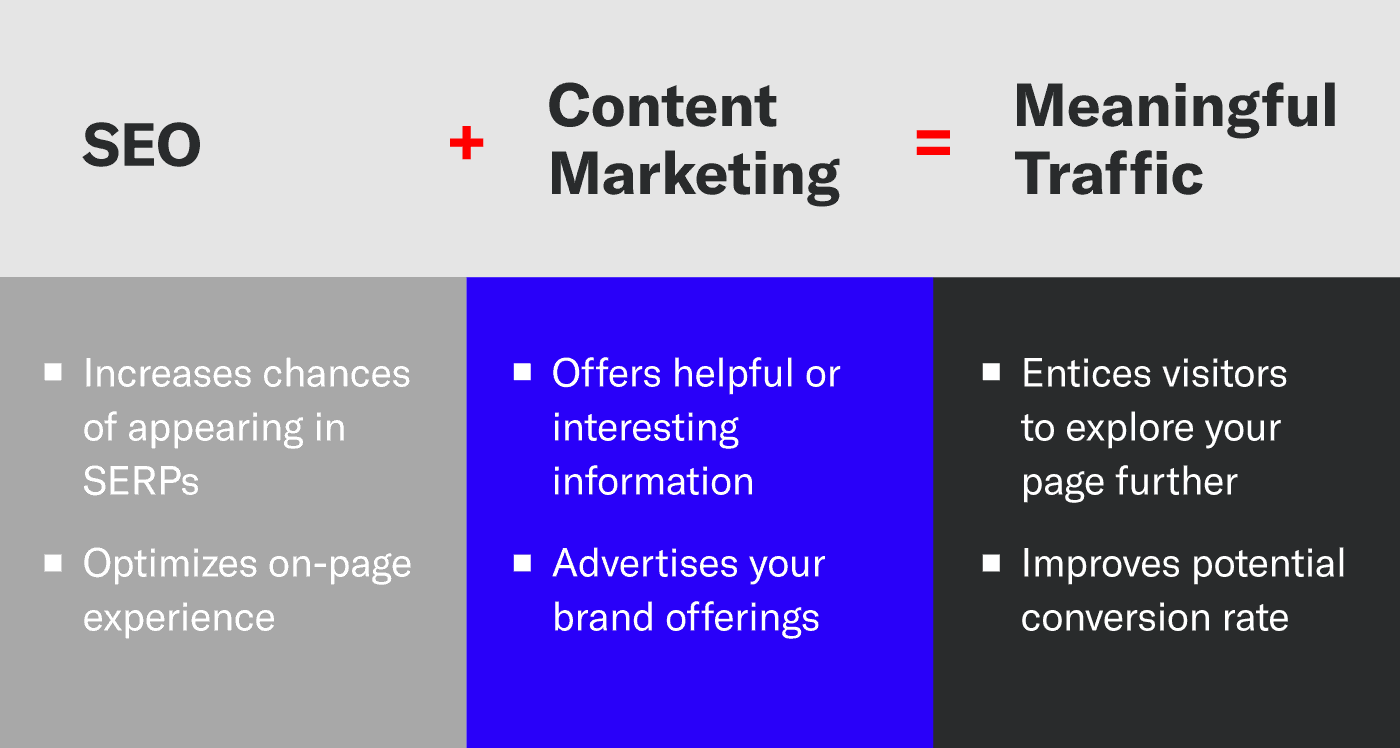Content Marketing and SEO are two crucial aspects of digital marketing. Both aim to increase online visibility and attract potential customers.
Understanding the differences between Content Marketing and SEO can help businesses make informed decisions. Content Marketing focuses on creating valuable content to engage and retain an audience. SEO, on the other hand, optimizes this content for search engines. Knowing how to balance both strategies can significantly impact your online success.
By comparing Content Marketing and SEO, you will gain insights into how they complement each other and which approach might be more suitable for your specific needs. Stay tuned to learn how leveraging both can enhance your overall marketing strategy.
Table of Contents
- 1 Introduction To Content Marketing And Seo
- 2 Core Elements Of Content Marketing
- 3 Core Elements Of Seo
- 4 Benefits Of Content Marketing
- 5 Benefits Of Seo
- 6 Challenges In Content Marketing
- 7 Challenges In Seo
- 8 Integrating Content Marketing And Seo
- 9 Choosing The Right Strategy For Your Business
- 10 Frequently Asked Questions
- 11 Conclusion
Introduction To Content Marketing And Seo
Understanding the difference between content marketing and SEO is crucial. These two concepts often overlap but serve unique purposes. Knowing both can help improve your online presence.
Definition Of Content Marketing
Content marketing involves creating and sharing valuable content. The goal is to attract and engage a target audience. This content can be blogs, videos, or social media posts. It aims to provide value and build trust with your audience. Effective content marketing can drive customer action.
Definition Of Seo
SEO stands for Search Engine Optimization. It focuses on improving your website’s visibility on search engines. SEO involves keywords, meta tags, and quality backlinks. It helps search engines understand your content. This can lead to higher rankings and more organic traffic.
Core Elements Of Content Marketing
The core elements of content marketing are essential for creating a successful strategy. They help in reaching the right audience and achieving business goals. Let’s dive into the essential components that make up content marketing.
Content Creation
Content creation is the foundation of any content marketing strategy. It involves producing valuable, relevant, and consistent content to attract and engage a target audience. Here’s a breakdown:
- Blog Posts: Share knowledge, insights, and updates on your industry.
- Videos: Demonstrate products, share customer testimonials, or provide tutorials.
- Infographics: Visualize data and information in an easy-to-understand format.
- eBooks: Offer in-depth knowledge on specific topics.
- Podcasts: Reach audiences who prefer audio content.
Each piece of content should address the needs and interests of your audience. Keep the tone conversational and engaging to hold their attention.
Content Distribution
Content distribution is about getting your content in front of the right audience. This process ensures your content reaches as many people as possible. The main methods include:
- Social Media: Share content on platforms like Facebook, Twitter, and LinkedIn.
- Email Newsletters: Send regular updates to subscribers with links to your content.
- SEO: Optimize content for search engines to increase organic traffic.
- Guest Posting: Publish content on other websites to reach new audiences.
- Paid Advertising: Use ads to promote content on search engines and social media.
Effective distribution requires a strategy. Identify the channels where your audience is most active. Tailor your distribution efforts to those platforms for maximum impact.
Core Elements Of Seo
Understanding the core elements of SEO is essential for every content marketer. These elements help your website rank higher on search engines. There are two main categories: On-Page SEO and Off-Page SEO. Let’s explore these core elements.
On-page Seo
On-Page SEO involves optimizing individual web pages. This helps them rank higher and earn more relevant traffic. Key aspects include:
- Keyword Optimization: Use relevant keywords in your content, titles, and meta descriptions.
- Content Quality: Write high-quality, original content that provides value to users.
- Title Tags: Create compelling and accurate titles for your pages.
- Meta Descriptions: Write concise and informative meta descriptions for better click-through rates.
- Header Tags: Use H1, H2, and H3 tags to structure your content logically.
- URL Structure: Ensure your URLs are clean, descriptive, and keyword-rich.
- Internal Linking: Link to other relevant pages on your site to keep users engaged longer.
- Image Optimization: Use alt text and compress images for faster load times.
Off-page Seo
Off-Page SEO focuses on activities outside your website. These actions help improve your site’s authority and ranking. Key aspects include:
- Backlinks: Acquire high-quality backlinks from reputable websites.
- Social Media: Promote your content on social platforms to increase visibility.
- Guest Blogging: Write articles for other websites to gain exposure and backlinks.
- Influencer Outreach: Collaborate with influencers to reach a wider audience.
- Brand Mentions: Get your brand mentioned on other websites for better recognition.
Both On-Page SEO and Off-Page SEO are crucial for a successful SEO strategy. They work together to improve your website’s visibility and authority. Focus on these core elements for better search engine performance.

Credit: www.linkedin.com
Benefits Of Content Marketing
Content marketing offers many benefits for businesses. It helps brands connect with their audience and drives growth. Let’s explore two key benefits: Brand Awareness and Customer Engagement.
Brand Awareness
Content marketing boosts brand awareness. It helps businesses reach new audiences. By creating valuable content, brands can establish themselves as industry experts. This leads to increased visibility and recognition.
Quality content also gets shared on social media. This further expands the reach. Informative blog posts, engaging videos, and helpful infographics attract attention. They make people remember your brand.
Consider these stats:
| Metric | Percentage |
|---|---|
| Increased Brand Recognition | 80% |
| More Traffic | 72% |
Focusing on brand awareness through content marketing can lead to long-term success. It builds trust and loyalty.
Customer Engagement
Content marketing enhances customer engagement. It provides valuable information that meets audience needs. Engaging content encourages interaction and keeps customers coming back.
Here are some ways to boost engagement:
- Create interactive content, like quizzes and polls.
- Write informative blog posts that solve problems.
- Share user-generated content.
Engaged customers are more likely to make purchases. They also become brand advocates. This leads to more referrals and higher sales.
According to studies:
- Engaged customers spend 23% more.
- They also have a 90% higher purchase frequency.
Investing in content marketing can drive customer engagement. It fosters a strong connection between the brand and its audience.
Benefits Of Seo
SEO, or Search Engine Optimization, offers many benefits for websites and businesses. It helps improve visibility on search engines, driving more traffic to your site. Let’s explore some key advantages of using SEO.
Organic Traffic
SEO increases your website’s organic traffic. This means more visitors come to your site without paid ads. People trust search engines and tend to click on top results. Optimizing your content and keywords helps you rank higher. This results in more visitors finding your site naturally. Higher organic traffic often leads to more leads and sales. It’s a great way to grow your online presence.
Cost-effectiveness
SEO is cost-effective compared to paid advertising. You don’t have to spend money on ads to get visitors. Once optimized, your content can continue to attract traffic for months. This makes it a sustainable marketing strategy. Investing in SEO can provide long-term benefits. It also helps you save on marketing costs over time. This makes it an ideal choice for businesses with tight budgets.
Challenges In Content Marketing
Content marketing offers many benefits. Yet, it also presents unique challenges. These challenges can hinder the success of your content strategy. Below, we will discuss some of the most common obstacles.
Time-consuming
Creating high-quality content is often time-consuming. This includes researching, writing, editing, and promoting. Each step requires a significant amount of time and effort. To ensure your content stands out, it must be well-crafted and valuable.
Here’s a quick breakdown of the content creation process:
| Step | Estimated Time |
|---|---|
| Research | 2-4 hours |
| Writing | 4-6 hours |
| Editing | 1-2 hours |
| Promotion | 3-5 hours |
As shown, producing a single piece of content can take over 15 hours. This does not include ongoing optimization and updates. Consistently creating such content can be a daunting task.
Content Saturation
The internet is flooded with content. Every day, millions of articles get published. This abundance creates a challenge known as content saturation. Standing out in this crowded space is difficult.
Here are some quick statistics:
- Over 4.4 million blog posts are published daily.
- More than 500 hours of video are uploaded to YouTube every minute.
With so much content available, capturing your audience’s attention is harder. Your content must be unique and provide value. Offering fresh insights or a new perspective can help.
To combat content saturation:
- Focus on niche topics.
- Provide in-depth analysis.
- Engage with your audience.
By addressing these challenges, you can improve your content marketing strategy. Always prioritize quality over quantity. This way, your content will resonate with your audience.
Challenges In Seo
SEO is crucial for online visibility. But it comes with its own set of challenges. These challenges can make it hard to achieve and maintain top rankings. Two of the biggest hurdles are constant algorithm changes and high competition.
Constant Algorithm Changes
Search engines like Google update their algorithms frequently. These changes aim to improve search results. But they can also disrupt your rankings. What worked yesterday might not work today. Keeping up with these changes is essential. You need to adapt your strategy quickly.
Algorithm updates often come without warning. This unpredictability makes it tough for marketers. A sudden drop in rankings can impact traffic and revenue. Staying informed about updates is crucial. Regularly check for news from search engines. Adjust your SEO tactics accordingly.
High Competition
SEO is a competitive field. Many businesses strive for top rankings. This high competition makes it hard to stand out. Large companies often dominate search results. They have more resources for SEO. Smaller businesses may struggle to compete.
To succeed, you need a well-planned strategy. Focus on unique content and long-tail keywords. These can help you find your niche. Consistent effort is key. Keep improving your website and content. Over time, this can help you gain an edge.
Integrating Content Marketing And Seo
Integrating Content Marketing and SEO is a powerful strategy for online success. Combining these two approaches can drive more traffic and increase visibility. By aligning your content marketing efforts with SEO practices, you can create a more effective digital marketing strategy. Let’s explore how to integrate these two essential elements.
Keyword Optimization In Content
Keyword optimization is crucial for SEO. It involves using relevant keywords in your content. Start with thorough keyword research. Identify terms your audience searches for. Use these keywords naturally in your content. Avoid keyword stuffing. It can hurt your SEO efforts. Instead, place keywords in titles, headings, and throughout the text. This practice helps search engines understand your content better.
Long-tail keywords are also important. They are more specific and less competitive. Including long-tail keywords can attract a targeted audience. Use tools like Google Keyword Planner. These tools help find suitable keywords for your content. Regularly update your keywords to stay relevant.
Link Building Strategies
Link building is another key aspect of SEO. It involves acquiring backlinks from other websites. Quality backlinks can improve your site’s authority. To get backlinks, create high-quality content. People are more likely to link to valuable content. Guest blogging is a great strategy. Write articles for other sites in your niche. Include a link back to your site in your author bio.
Internal linking is also important. Link to other relevant pages on your site. This practice helps search engines crawl your site. It also keeps users on your site longer. Use descriptive anchor text for your links. This text should give a clear idea of what the linked page is about.
Choosing The Right Strategy For Your Business
Choosing the right strategy for your business can be challenging. Content marketing and SEO are both powerful tools. Each has its own benefits and challenges. Your choice depends on your specific needs and goals. This guide will help you make the right decision.
Assessing Business Goals
Start by identifying your business goals. Are you looking to increase brand awareness? Or maybe you want to drive more traffic to your website. Content marketing works well for building relationships. SEO, on the other hand, is great for improving search engine rankings. Knowing your goals will guide your choice.
Evaluating Resources And Budget
Consider the resources you have. Content marketing often requires more time and creativity. You need to create quality content regularly. SEO requires technical skills and knowledge of search algorithms. Both need a budget, but the allocation may differ.
Think about your team’s strengths. Do you have skilled writers? Or is your team more technical? Align your strategy with your team’s abilities. This will ensure better results and efficient use of resources.

Credit: www.semrush.com

Credit: www.crystaldsmith.com
Frequently Asked Questions
What Is Content Marketing?
Content marketing involves creating and sharing valuable content. It aims to attract and engage a target audience. The ultimate goal is to drive profitable customer action.
How Does Seo Work?
SEO optimizes your website to rank higher on search engines. It involves keyword research, on-page optimization, and quality backlinks. The main goal is to increase organic traffic.
Can Content Marketing Improve Seo?
Yes, content marketing can improve SEO. High-quality content attracts backlinks and engages users. This can boost your search engine rankings.
Which Is Better: Content Marketing Or Seo?
Neither is better; they complement each other. Content marketing provides valuable content, while SEO ensures it’s discoverable. Together, they boost online visibility.
Conclusion
Balancing content marketing and SEO is key for online success. Both strategies have unique strengths. Content marketing builds trust and engages your audience. SEO improves visibility and drives traffic to your site. Together, they create a powerful online presence. Focus on quality content and smart SEO tactics.
This combination will help you reach your goals. Consistent effort will yield lasting results. Remember, patience and persistence matter. Start today and grow your digital footprint.




